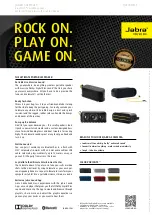
11
Step 2 - ADD GASOLINE
WARNING: This generator may emit highly flammable and explosive gasoline vapors,
which can cause severe burns or even death if ignited. A nearby open flame can lead to
explosion even if not directly in contact with gasoline.
Use fresh (within 30 days from purchase), lead-free gasoline with a minimum of 87 octane rating. Do not mix oil
with gasoline.
Fuel tank capacity: 8 Gallons
To add gasoline, follow these steps:
1. Make sure the generator is on a level surface.
2. Unscrew fuel cap and set aside. NOTE: The fuel cap may be tight and hard to unscrew.
3. Slowly add unleaded gasoline to the fuel tank. Be careful not to overfill. The capacity of the fuel tank is 8 gallons.
NOTE: Do not fill the fuel tank to the very top. Gasoline will expand and spill over during use even with the fuel
cap in place.
4. Reinstall fuel cap and wipe clean any spilled gasoline with a dry cloth.
IMPORTANT:
• Never use an oil/gasoline mixture.
• Never use old gasoline.
• Avoid getting dirt or water into the fuel tank.
• Gasoline can age in the tank and make starting difficult. Never store generator for extended periods of time with
fuel in the tank or the carburetor.
• Turn the fuel cock off and drain the fuel from the carburetor.
GENERATOR PREPARATION
Step 3 - GROUND THE GENERATOR
WARNING: Failure to properly ground the generator
can result in electrocution.
Ground the generator by tightening the grounding nut on the
front control panel against a grounding wire (Figure 3). A gener-
ally acceptable grounding wire is a No. 12 AWG (American Wire
Gauge) stranded copper wire. This grounding wire should be
connected at the other end to a copper, brass, or steel-grounding
rod that is driven into the earth. Wire and grounding rods are not
included in generator contents.
Grounding codes can vary by location. Contact a local electrician
to check the area codes.
Figure 3 - Grounding Nut
Содержание 5613K
Страница 33: ...33 WIRING DIAGRAM...
Страница 35: ...35 Thanks for remembering...












































